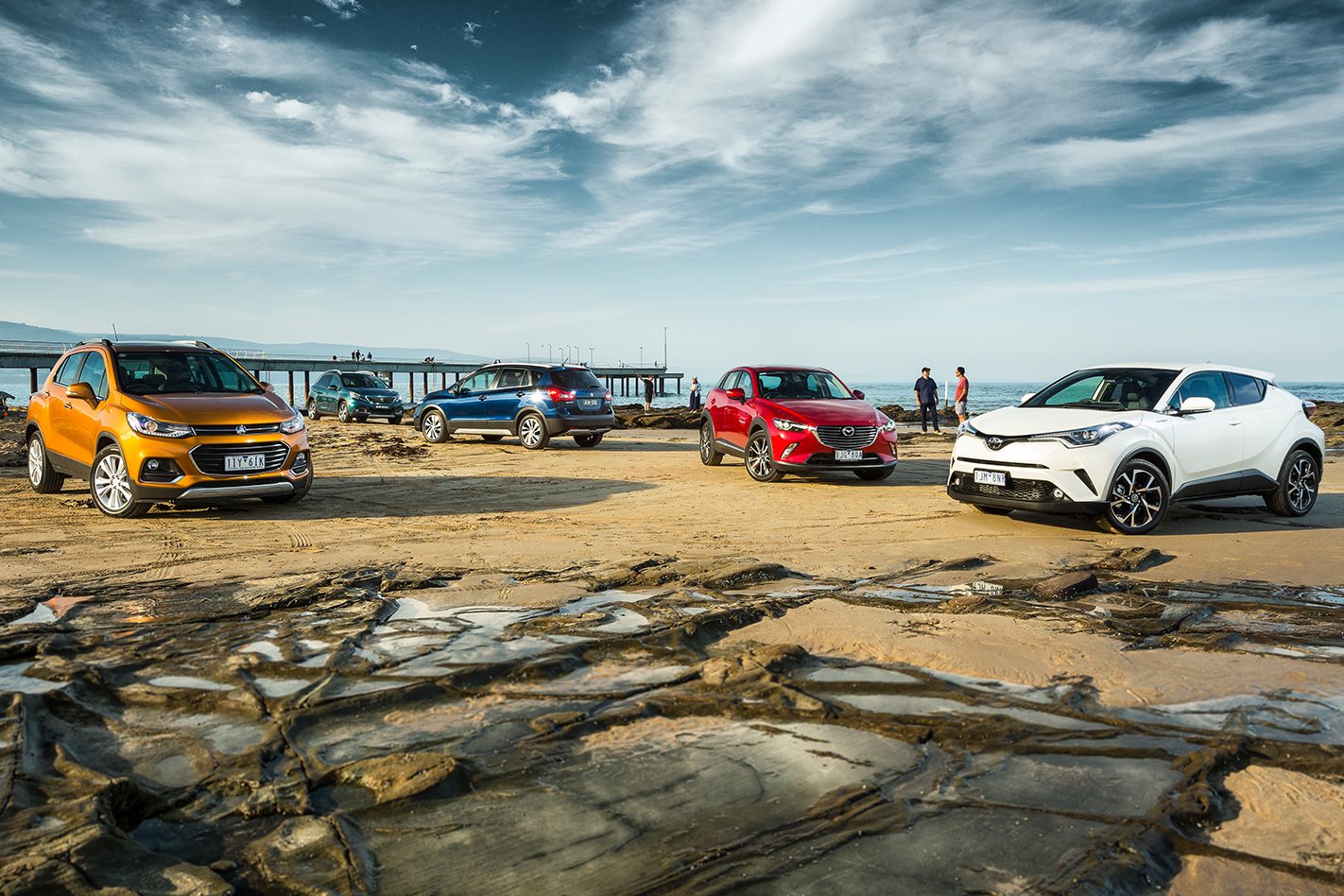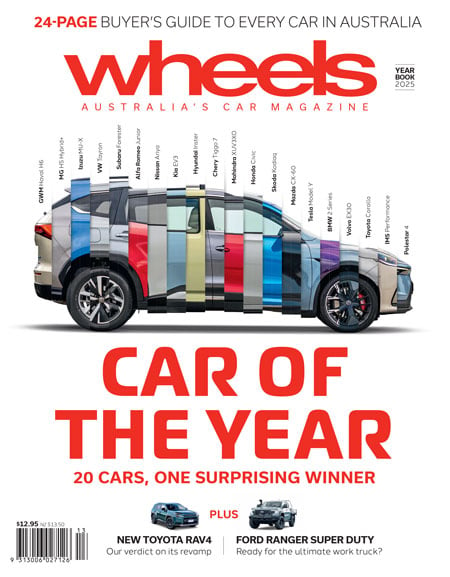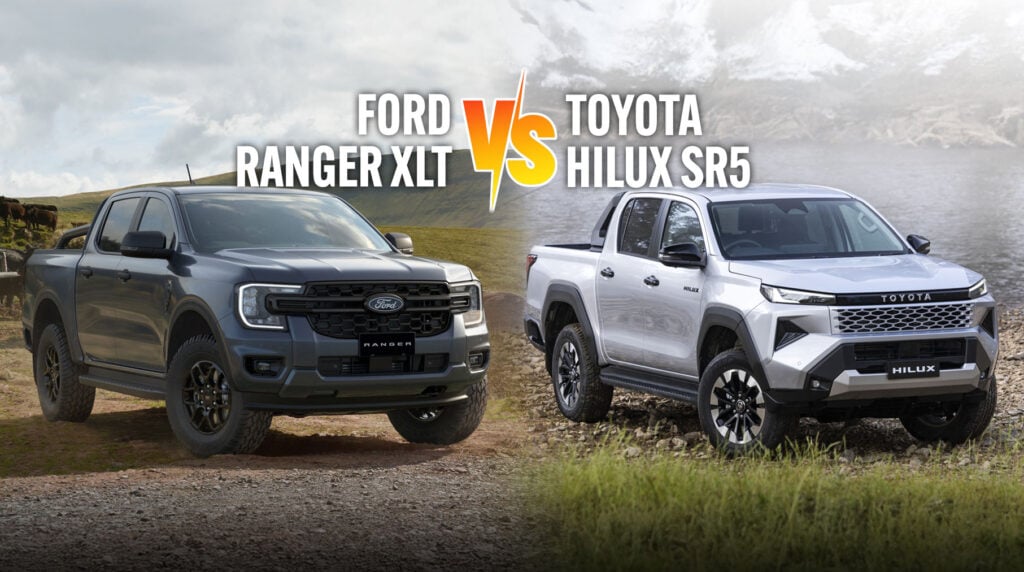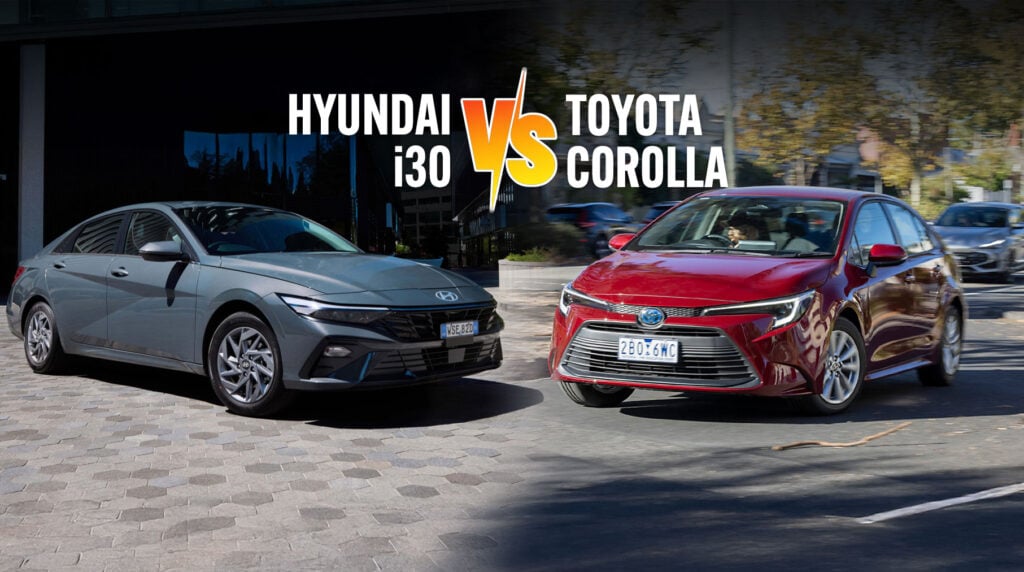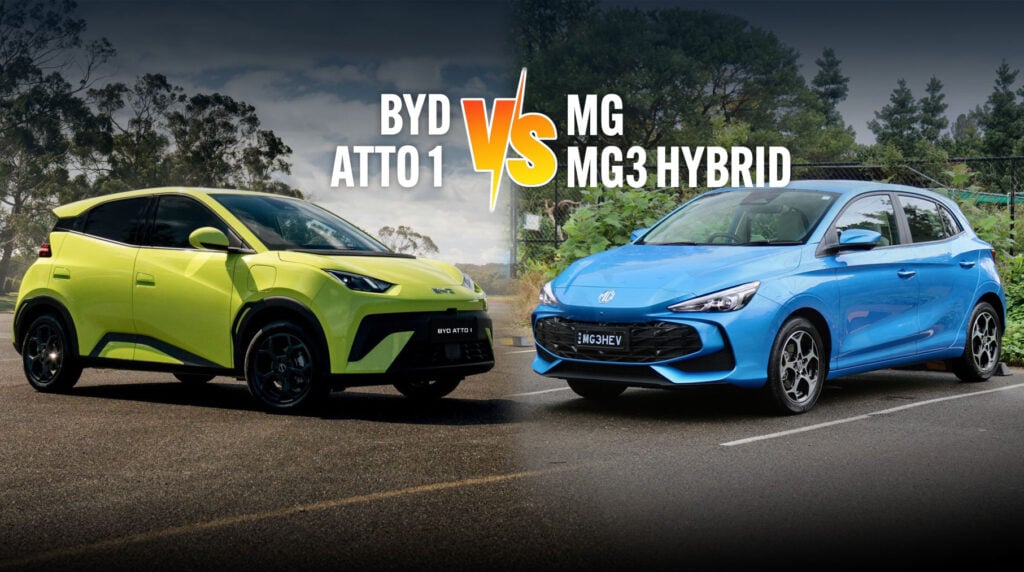TOYOTA has been in the grip of a massive mid-life crisis.
Early this decade, following highly publicised recalls and lawsuits, flamboyant company president Akio Toyoda promised that better and more exciting cars would follow. Ones that would be leaders but also true to the brand’s legendary reputation for reliability.
Big talk from the Japanese giant that has foisted a long line of mainstream dullards on us, right up to the current Yaris and Camry, but the resulting first fruit of Toyota’s mindset reset – last year’s dramatically styled fourth-gen Prius and now the C-HR (for Coupe High Rider) – are anything but average.
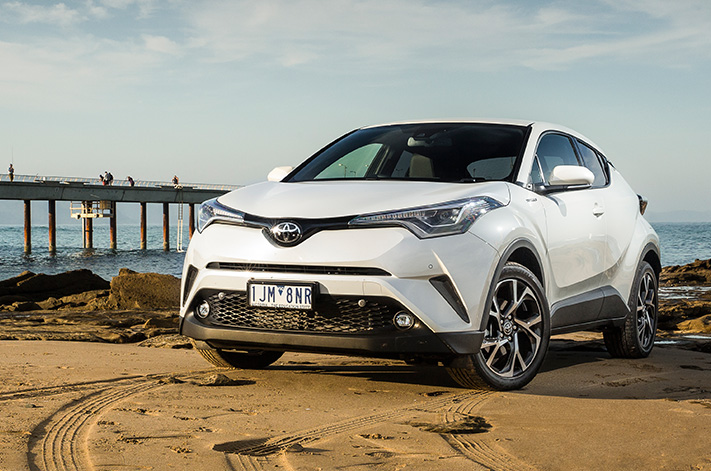
That’s a promising start, particularly as knockout design has helped drive CX-3 sales ever upwards. In $33,290 Akari 2.0-litre front-drive auto guise as tested, the Mazda costs $50 more than the up-spec Koba 2WD that Toyota reckons will probably be the most popular C-HR variant. Game on.
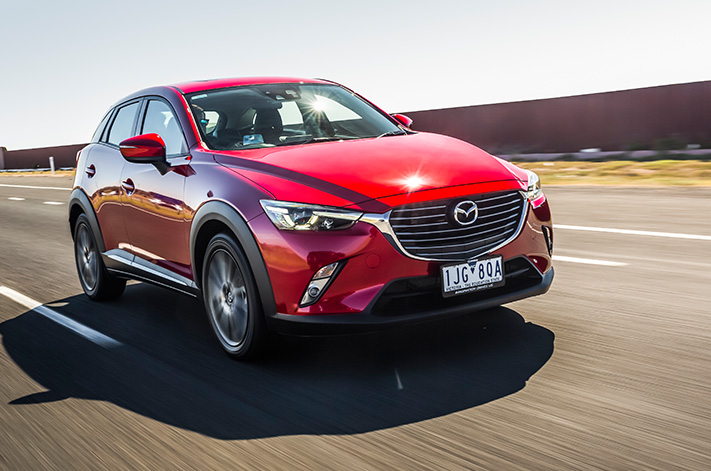
Both the CX-3 and C-HR deserve fresh blood, so how about three recently updated wannabes?
The Holden Trax was one of the segment’s trailblazers when it surfaced back in October 2013. Precisely the same time, it turns out, as our fourth player, the Peugeot 2008.
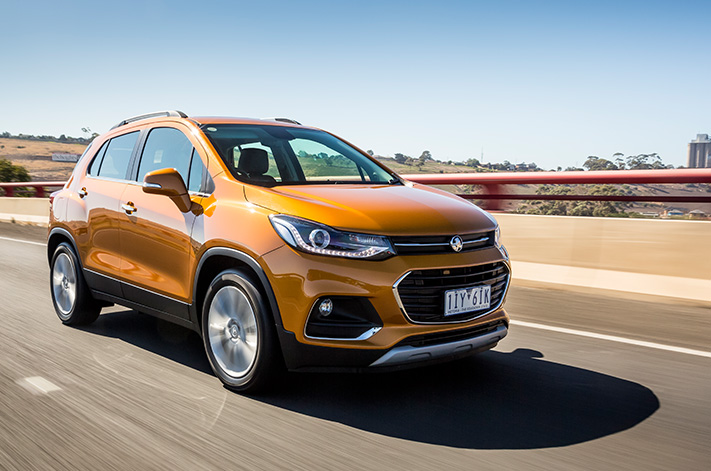
While the Trax – represented here as the range-topping LTZ 1.4 turbo auto from $30,490 – also received a welcome dashboard redesign (and rear disc brakes!), the 2008 instead underwent an urgent heart transplant, ditching the dated 1.6-litre four-pot and four-speed auto combo for a lightweight 1.2 turbo triple with a six-speeder, which is now standard across the range. The 2008 found barely 350 buyers in 2016, so the change couldn’t have come soon enough. Ours is wearing mid-level $30,990 Allure attire.
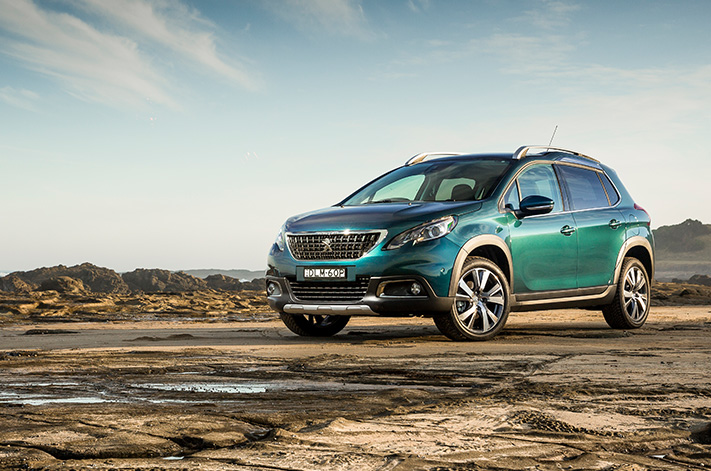
All the contenders are front-drive, all are auto, and all are five-seaters. And all but the CX-3 have something to prove. But the uniformity stops there.
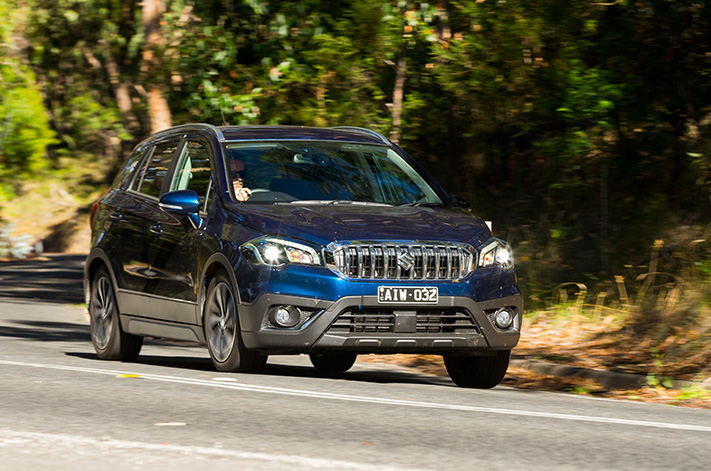
Hmm… then the penny drops – the ‘C’ in the name could also denote ‘C’ segment, or Corolla-class space. And, indeed, a foursome of six footers should have sufficient head, leg, knee and foot room.
That expansive feeling is backed up by a sense of width, deep cushions, a vast windscreen, thin pillars and a low-cowl dash.
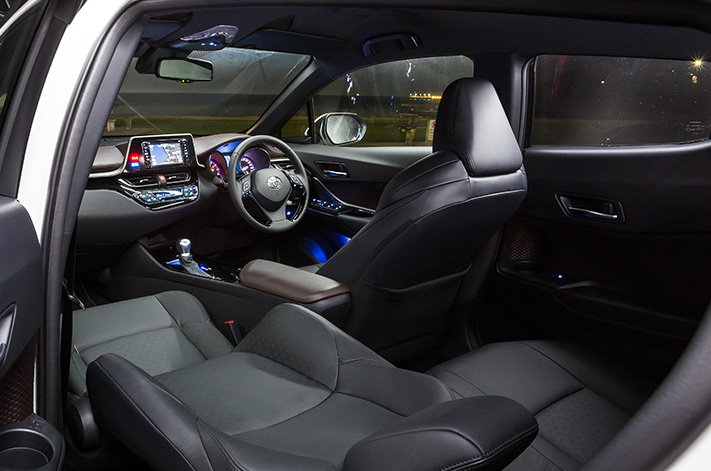
But the C-HR’s is a cabin of two halves. If you plan to carry rear-seat riders regularly, then beware that an extra-wide door pillar and fat tombstone-shaped front seats obscure vision. Great for eluding paparazzi, not so much for claustrophobics. The absence of cupholders, a centre armrest, overhead grab handles or USB ports, along with constant tyre drone, further underscores the Toyota’s front-row focus.
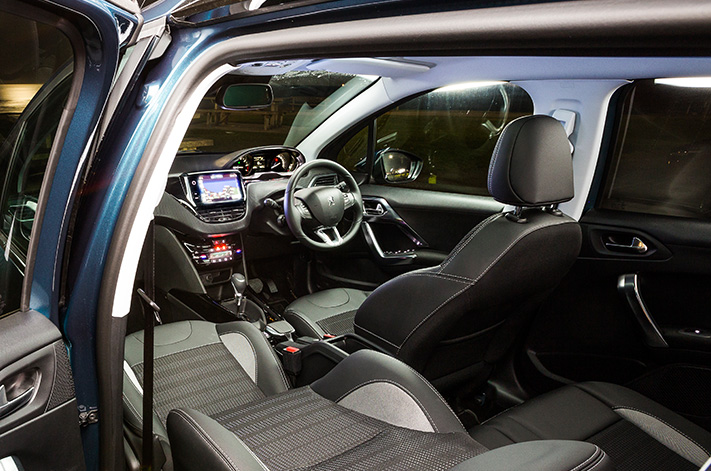
The airy sensation is enhanced by the 2008’s somewhat divisive high-binnacle/low-wheel driving position, while elegant instrumentation, storage aplenty and uniquely smart trim are further plus points.
Seriously, when the lack of a start button, a tiny glovebox and wilfully small, anti-Starbucks cupholders are the only real bugbears, you’re on to a good thing.
Also missing in the group’s sole Euro is intrusive road and tyre noise, which is prevalent in all the others. The Pug’s hush cabin adds another layer of refinement and comfort to a satisfyingly thorough interior execution. Not ostentatious like the Toyota’s, but quietly cosseting. Like great French cars always have been.
The capacious S-Cross, meanwhile, is large and accommodating in every sense of the word and, like the C-HR, is built on a C-segment platform (shared with the Vitara). Easy entry/egress, plenty of vision, and the most inviting back row of the quintet highlight typical Suzuki thoroughness.

We suspect neither the smaller Holden nor the even cosier – though never cramped – Mazda suffered from such ailments, but we can’t be sure since they too are boom boxes on bad roads.
In the Trax’s case, it was more mechanical at higher revs, since the good quality Continental Premium Contact rubber helped keep the tyre hum in check. For a pert little SUV, the Holden’s packaging brings a commanding driving position, backed up by adequate all-round vision. But the LTZ’s seats lack sufficient long-distance support, its vinyl trim doesn’t breathe and its air-con struggles in hot weather. Pity, because the new dash is a stylistic and functional advance over the patchy old one.
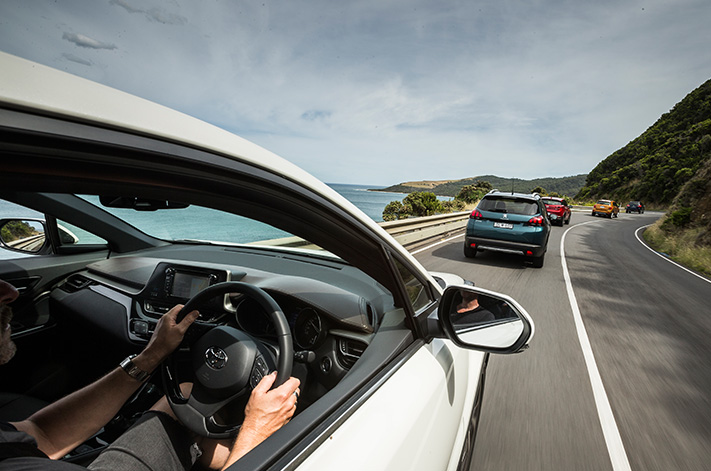
It’s an experience that translates wholly on the move as well. Ensconced in the driver’s seat as you are in the best modern Mazdas, the CX-3 shrinks around you and never cuts the connection – for better or for worse.
The 109kW/192Nm 2.0-litre Akari is the only naturally aspirated contender here, as well as the most powerful on paper.
Initially at least, the CX-3 lacks the theatrical turbo kick of the others, but what it has instead is steady and determined acceleration that just keeps growing stronger as revs increase. To 60km/h there is only one-tenth of a second between it and the 103kW/200Nm Trax, yet the CX-3 is a full second quicker than the Holden from 80-120km/h. That the Mazda also consumed nearly 10 percent less premium unleaded speaks volumes of the vocal powertrain’s inherent efficiency. Oh, and the circa-170kg difference in kerb weight between the two…
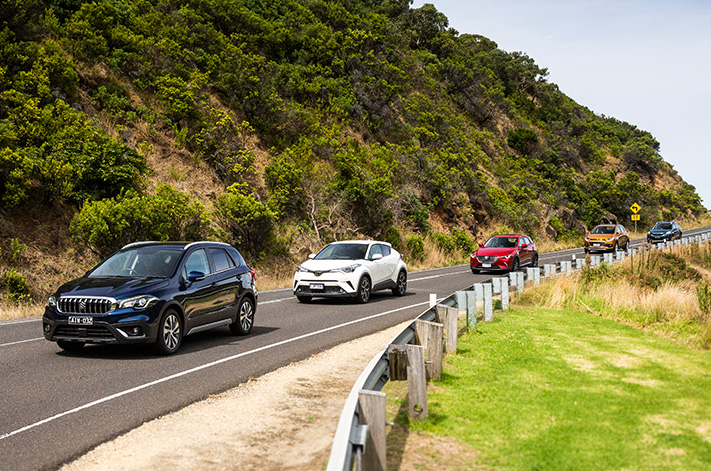
At the other extreme is the 103kW/220Nm Suzuki, the undisputed featherweight of the fivesome at 1170kg, but a heavy hitter in the thrust league. The quintet’s highest power-to-weight ratio, combined with what might just be the world’s smoothest yet most muscular production sub-1.5-litre turbo petrol engine going, results in a velvet missile.
That slick torque-converter auto contributes, too.
Together, this so-called Boosterjet uber-duo provides a luxuriant ability to glide you in Teflon-coated mechanical bliss. Once into triple digits, nothing can catch the speedy S-Cross. It’ll nudge the old ton (160km/h) 3.6sec before the CX-3.
That it was also the most economical on test is something the motorcycle maker should further be proud of. Bravo, Suzuki.
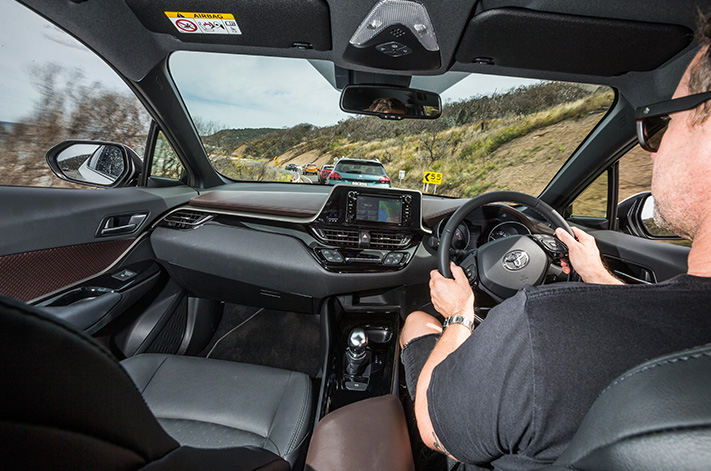
That’s where the 2008 shines. Up to 100km/h (which it took the longest to reach, at 11.1sec), the Frenchy has to rely on lightness and sensible gearing to make the most of its feisty – and thrummy – 81kW/205Nm 1.2-litre three-pot turbo’s power band, meaning that it feels far sprightlier at lower speeds than the ho-hum figures suggest. But given its head, the SUV from Sochaux will just hum along quietly, relying on a torrent of mid-range punch to pull the lusty 2008 through when overtaking duties beckon.
And when the roads start to twist, or crumble and heave, you then understand why there is no substitute for 135 years of continuous car manufacturing expertise. As unlikely as it might seem given the dumpy styling and Peugeot’s recent career-low driveability malaise, in this company the humble 2008 displays near flawless dynamic capabilities.
“You can trace the line like no other here,” quipped senior road tester Nathan Ponchard. Sharp yet utterly faithful, the 2008’s steering is precisely measured and matched to a chassis that is both old-school French supple and German poised, revealing a linearity that ultimately led the Peugeot to be everybody’s take-home favourite. Yes, there is some body roll, but it’s controlled and in keeping with the loping nature of this relaxing beast. And don’t forget the 2008’s road and tyre noise is by far the most contained.
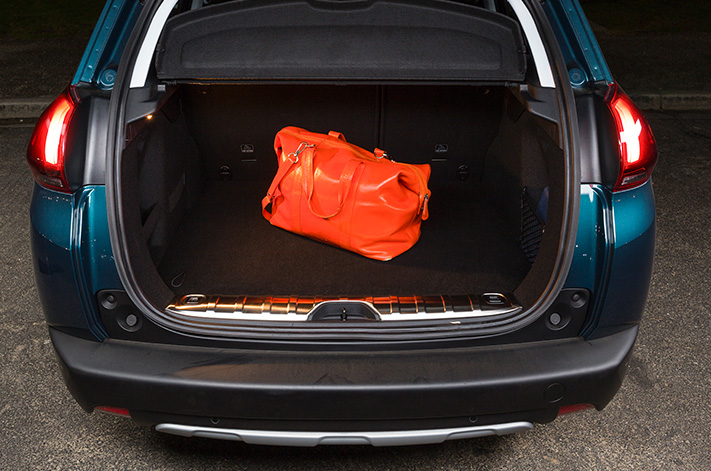
Planted, poised, secure, mature, refined… these are words that instantly come to mind when assessing the C-HR’s dynamic traits, which benefit from being the only SUV here without a torsion beam rear suspension (it uses double wishbones out back).
And that’s in Normal. Select Sport mode and there’s a bit more heft to the helm. A world away from a RAV4 or Prado then, what’s on offer here is keen, calm and accurate steering for the driver to enjoy – if not revel in – combined with an absorbent and isolating ride that’s likely to please all on board. Now the engineers from Nagoya need to make things a bit quieter.
Also a driver’s SUV, but in a more engaging way, is the CX-3. We applaud the Mazda’s direct, agile steering, that’s been tuned and weighted perfectly for fun, fluid and expressive turn-in, backed up by encouraging poise and control… on smooth corners.
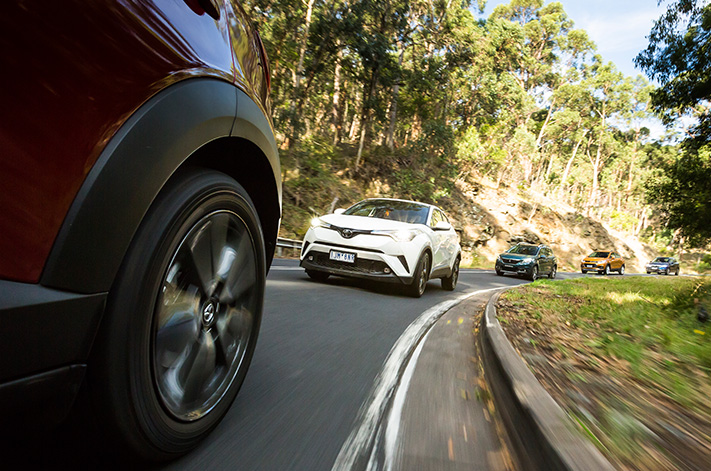
Kind of the opposite happens in the Holden. Just as with the lazy powertrain, the chassis needs to be stoked for it to stir into action. That’s because the steering, though quick and responsive, seems a little remote in feel, while the firmly sprung suspension is constantly barraging you and your occupants with what’s going on below. Maybe a bit more from column A and a bit less from column B might be a better everyday compromise?
Find a fast ribbon of road, however, and the set-up gels nicely, turning the wooden Trax into an engaging T-Rex, so to speak. It’s dated but still dynamic.
You won’t be hunting for the long way home in the Suzuki, however, despite that peachy powertrain. While chassis balance is fundamentally sound, the steering is numb and gooey, particularly around straight ahead.
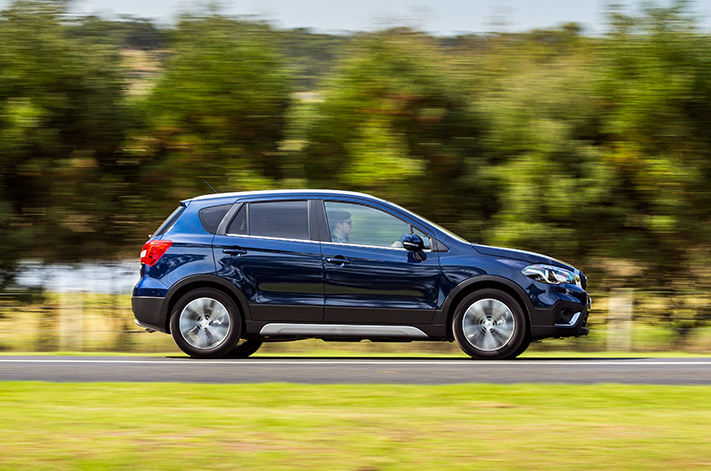
While we wonder whether the Trax’s superior rubber might improve the Suzuki’s manners, there’s probably little more that Holden’s engineers can do to refine their ageing Opel-based Chevrolet SUV, so last it comes. Behind the S-Cross, whose performance and efficiency are transcendental. Both feel like works in progress, though Trax makes some sense as a $26K LS.
It’s then a big step up to the far-more complete CX-3. Sporty and dynamically focused like no other rival period, the engaging Mazda oozes panache, especially in lovely Akari guise. But we’d spring for AWD to quell the chassis quirks, or wait for the imminent update.
So what we have left is a Peugeot and Toyota. One for the head and one for the heart. But which and why?
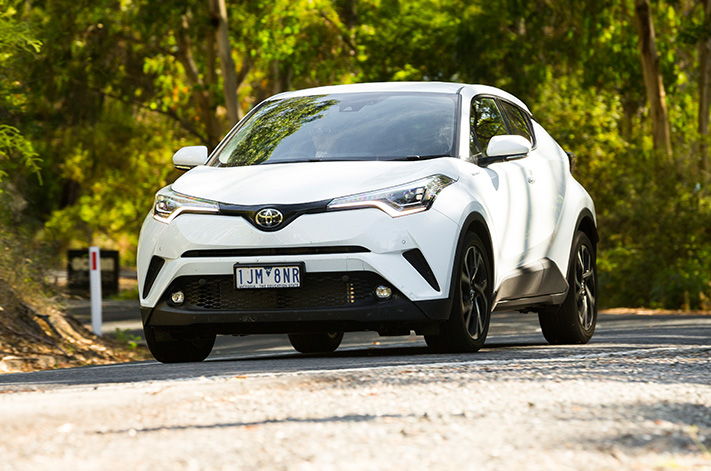
But the C-HR, too, is a consummate all-rounder, with degrees of sophistication and soul thrown in to seal the deal. Not just a small SUV, it is a spiritual successor to the better Celica coupes too, while also a breakthrough in design and engineering for this class.
It’s one small step for crossovers, one giant step for you-know-who. Keep this up, and Toyota’s middle-of-the-road crisis is over.
First published in the May 2017 issue of Wheels magazine, Australia’s most experienced and most trusted car magazine since 1953.

